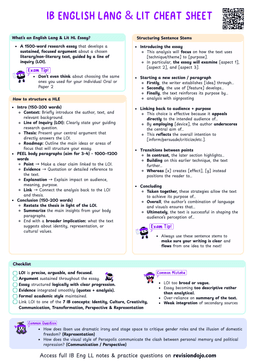Symbolism and Motifs Add Layers to Text
- Symbolism and motif are often confused, but they serve different purposes in literature.
- Understanding the difference helps you move beyond spotting a clever image once, and instead show how a writer builds meaning over time.
Symbolism
Symbolism
A symbol is a tangible object or image that stands in for an abstract idea.
- Writers use symbols to:
- Add layers of meaning to a scene or object
- Hint at themes or character emotions without stating them directly
- Create universal resonance, drawing on shared cultural ideas
Why Symbolism Matters
- Adds Depth: Symbols allow writers to convey complex ideas without explicitly stating them.
- Engages Readers: Readers are invited to interpret symbols, making the reading experience more interactive.
- Universal Appeal: Symbols often tap into universal experiences or emotions, making them relatable across cultures.
The symbol of the locked door suggests emotional barriers, showing how the character is closed off from others.
Motif
Motif
A motif is a recurring image, idea, or phrase that reinforces a theme throughout the text.
- Writers use motifs to:
- Develop themes gradually through repetition
- Create a sense of cohesion across different parts of the text
- Invite the reader to reflect on patterns of meaning
How Motifs Work
- Repetition: Motifs appear multiple times throughout a text, creating a pattern.
- Thematic Reinforcement: Each recurrence of the motif strengthens the underlying theme.


